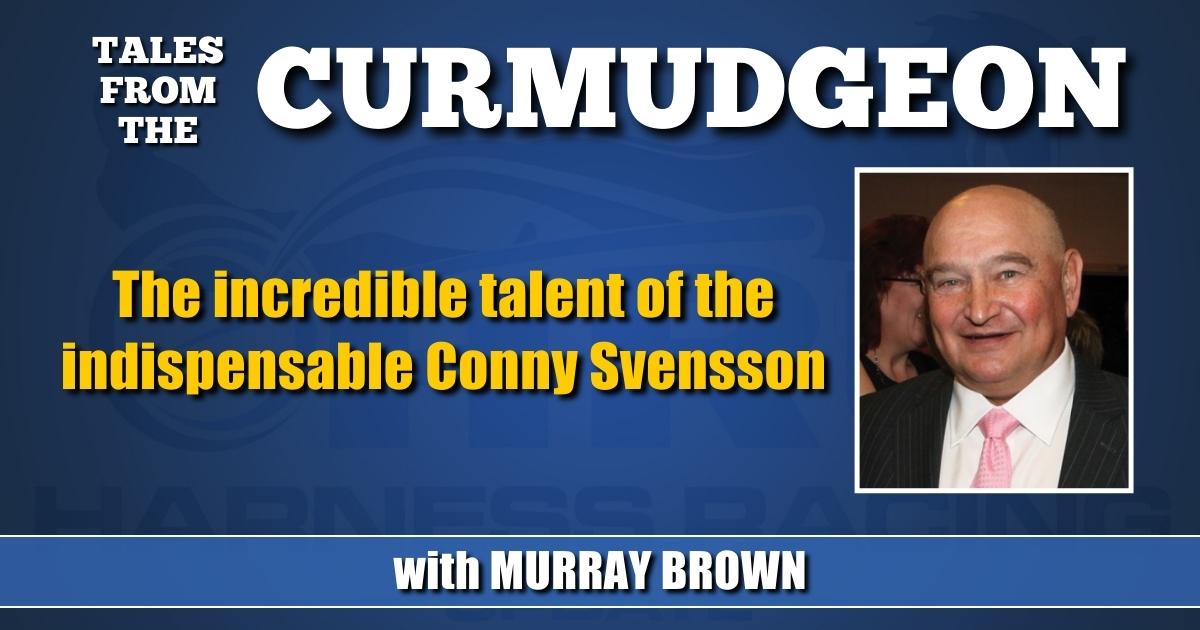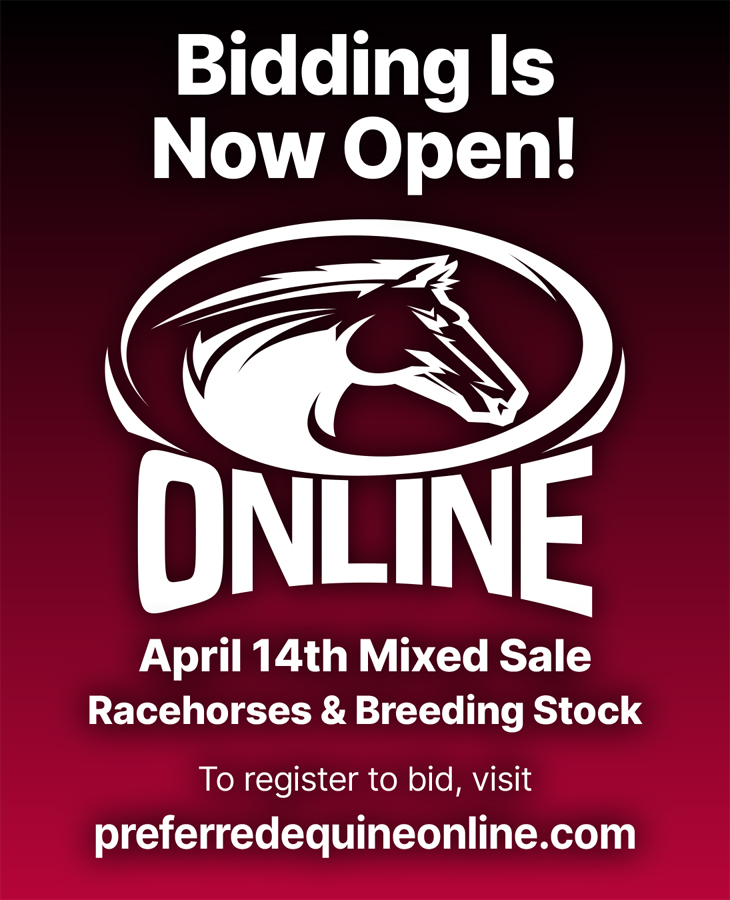The incredible talent of the indispensable Conny Svensson
by Murray Brown
I’m now in the third year of writing this column. During the stint I’ve tried to cover most, if not all types of personages in the sport, including drivers, trainers, grooms, owners, racetrack executives, veterinarians, officials and perhaps some others that do not come immediately to mind.
I’m fairly certain that Conny Svensson is my first farrier. He might not be the very best one ever, but he is certainly near the top of that list.
Svensson began shoeing horses more out of necessity than ability. He lived on an island in Sweden called Gotland. There was a small racetrack there. He and his father would usually have a trotter or two that they would work with in their spare time. Svensson was then a bricklayer. There were no blacksmiths on the island. One might be found occasionally at the small racetrack there. He began doing some of his own work. He enjoyed the work and took an evening course in horseshoeing at the only school of its type then in Sweden in Axevalla. He worked there for a couple of years. He was contacted by Jan Nordin, who asked if he was interested in coming to the United States to work for the Nordin Stables, at the time one of the most successful in North America. Jan’s father Soren wanted a horseshoer he could communicate with in Swedish. Conny and his wife Anneli soon embarked to the United States, Conny to become the Nordin Stable’s horseshoer and Anneli to become a caretaker in the stable. The Nordins were shortly afterwards hired by the Biazuzzi stable one of the major stables in Italy. They left the U.S. to set up shop in Italy. Moving from the United States held no interest for the Svenssons. They remained stateside and went to work for Norwegian horseman Per Henriksen. Conny recalls that among the first horses Anneli took care of was the Breeders Crown winning filly Expressway Hanover.
Jimmy Takter had been working for the Nordins while Conny was there. Takter went on his own and asked Conny to come and work with him. It is now 30 years later and Svensson is still working with the Takter family. When he went to join Takter he was to shoe horses and be a second trainer in the growing stable.
You’ve been with Jimmy for 30 years. That’s a lifetime in the horse business as well as most others.
“I look upon Jimmy as being like a brother to me. Our families are very close. He and Christina are godparents to our daughter. The same relationship has now risen through another generation. I now do Jimmy’s daughter Nancy’s work. Nancy’s stable and that of the Melander brothers Marcus and Matthias are about all of the work I do now. That amounts to more than 100 horses. That’s more than enough to keep me busy.”
Let’s talk about some of the favorite horses that you’ve shod.
“When you talk about favorites it comes down to two — Moni Maker, a great world renowned trotter and Captain Primeau a wonderful overnight racehorse that I and Anneli bred, raised and owned through his career. Captain Primeau has won 47 races for us, most of them at The Meadowlands. He also earned just about $400,000.”
Let’s hear about Moni Maker.
“What can I say about Moni Maker that hasn’t been said multiple times before? If you looked at her, you saw a big, beautiful mare. She was indeed big and strong, but she didn’t have the best feet. She had four different feet. which fortunately operated as they were supposed to. But that didn’t mean that they didn’t need attention. When she was in Europe Jimmy would fly me over to tend to those feet. I shod her in seven different countries — the United States, Canada, France, Italy, Sweden, Norway and Denmark.”
You trained with Jimmy for a while. Had you ever thought of becoming a trainer/driver?
“I’ve trained and driven occasionally, but never to any great extent. I just didn’t have the necessary talent to do it full time. I thought it best to stick with something that I thought that I was proficient at. Another factor was that Jimmy’s stable was increasing. As it grew, I just didn’t have the time to both train and shoe.”
The job of being a horseshoer has to be very demanding on the body, especially on the back.
“Yes it can be. I did have some back problems which required surgery. I guess I got lucky in choosing the right surgeon. I’ve had no further problems since then. As I’ve gotten older I’ve learned to limit myself.”
You work primarily with two Swedish stables that of the Takters and the Melanders. Do you believe that there are any particular reasons why Swedes in general and they in particular have been so successful?
“Two main reasons. The first is that they work hard, very hard. But there are others who might work just as hard without a corresponding amount of success. The second is that for the most part harness racing is all that they’ve ever known. In addition, they’ve had great teachers, people from whom they’ve learned great lessons in their trade. Jimmy’s father Bo William was a great horseman. When Jimmy decided to become a horseman — as though there was ever any doubt — he went to work for someone who some people believe was the greatest horseman ever, Soren Nordin. For Jimmy’s daughter Nancy the situation was pretty much the same. In addition to all the cumulative knowledge she gained through her father’s experience, she also learned so very much by being at his side and working for and with him. It was pretty much the same sort of situation with Marcus and Matthias Melander. Their uncle Stefan is one of Sweden’s greatest horsemen. When they packed up and came to the United States, they went to work for Jimmy Takter and of course benefitted from all of his knowledge. Another advantage the Swedish horsemen have is that they learned their craft working mostly with local horses. Speaking in generalities, the horses in Sweden were and to a great degree still are less natural than their North American counterparts. Working with them was more challenging than working with those that we have here. In relative terms, it was much easier being a farrier here than in Europe.”
You’ve now been in the United States for 30 years. What if any differences have you experienced through all the years?
“The biggest difference is in the horses themselves. Today’s horses are so much more natural. They have purely natural gaits. It is much easier to be a horseshoer today than it was back then. So many of them have good feet. One of the first lessons one learns when dealing with horses is that most lameness derives from the feet. There is great truth to that saying, ‘no foot, no horse.’ Carrying it one step further, there is a difference, but not a whole lot of difference involved between shoeing trotters and pacers.”
What do you consider your number one priority as a horseshoer?
“Not only number one, but also number two, three and four. That is to help the horse stay sound and healthy. As I’ve said above, I believe that most lameness in horses begins in the feet. That is one of the main advantages I have had in working with Jimmy Takter. There are not that many things that I am sure about. One of them is that I believe that Jimmy is the greatest diagnostician of lameness in horses with who I’ve ever been around. He has the unique ability to spot coming physical problems and respond to them than nobody else that I’ve known has. He is able to nip physical problems in the bud, well before and often much well before they can become irreversible.”
You are now 58 years old. Your work is very demanding on the body. Has it become more difficult? Does it make you to look forward to retiring in the foreseeable future?
“The answers are no and no. If anything it has become easier. It isn’t harder to do. That is due to the nature of the horses in that they are so natural today. As far as retiring, it hasn’t entered my mind. I love what I do. I look forward to going to work each day. Why would I possibly want that to end?
Have a question or comment for The Curmudgeon? Reach him by email at: hofmurray@aol.com


















